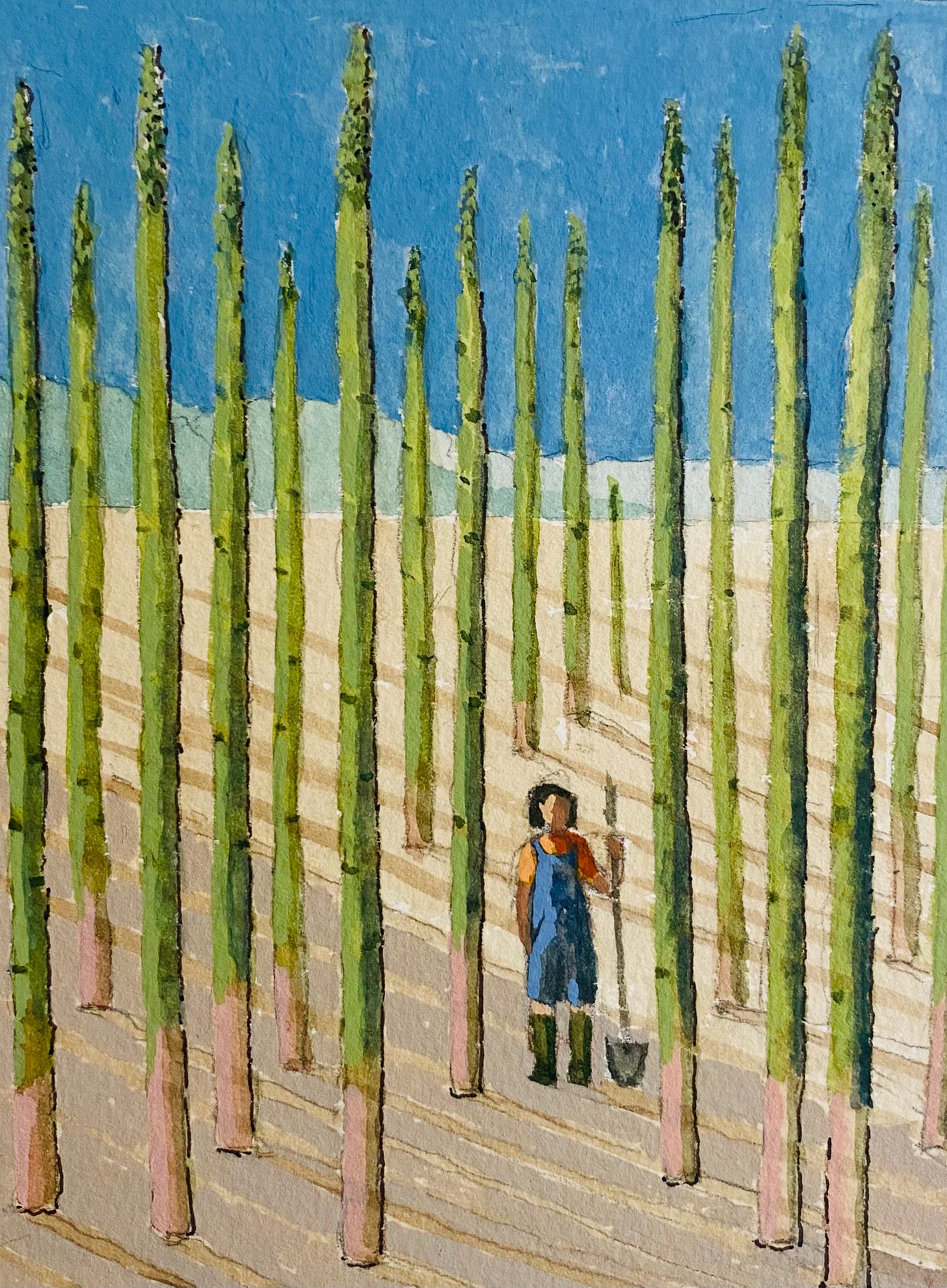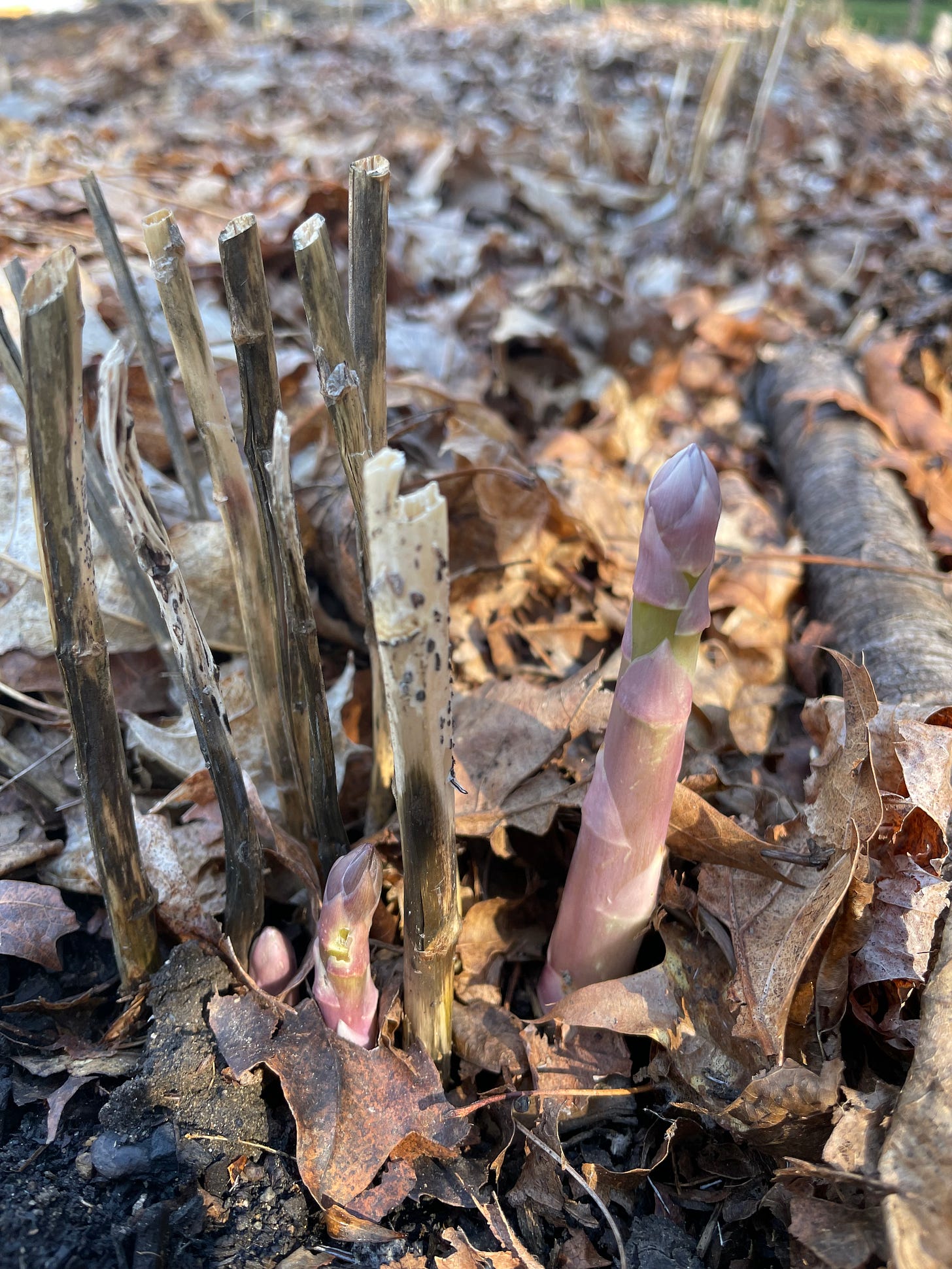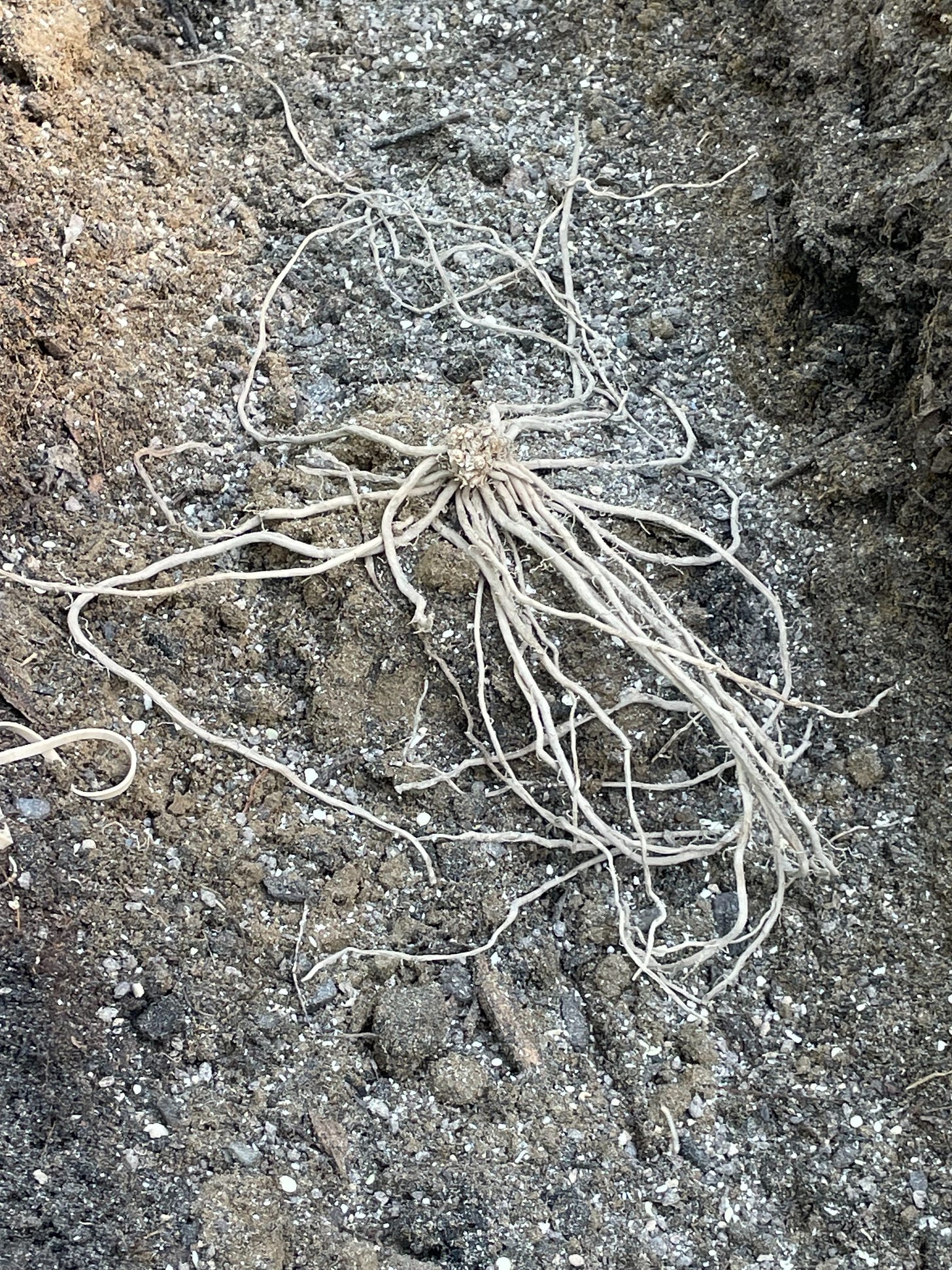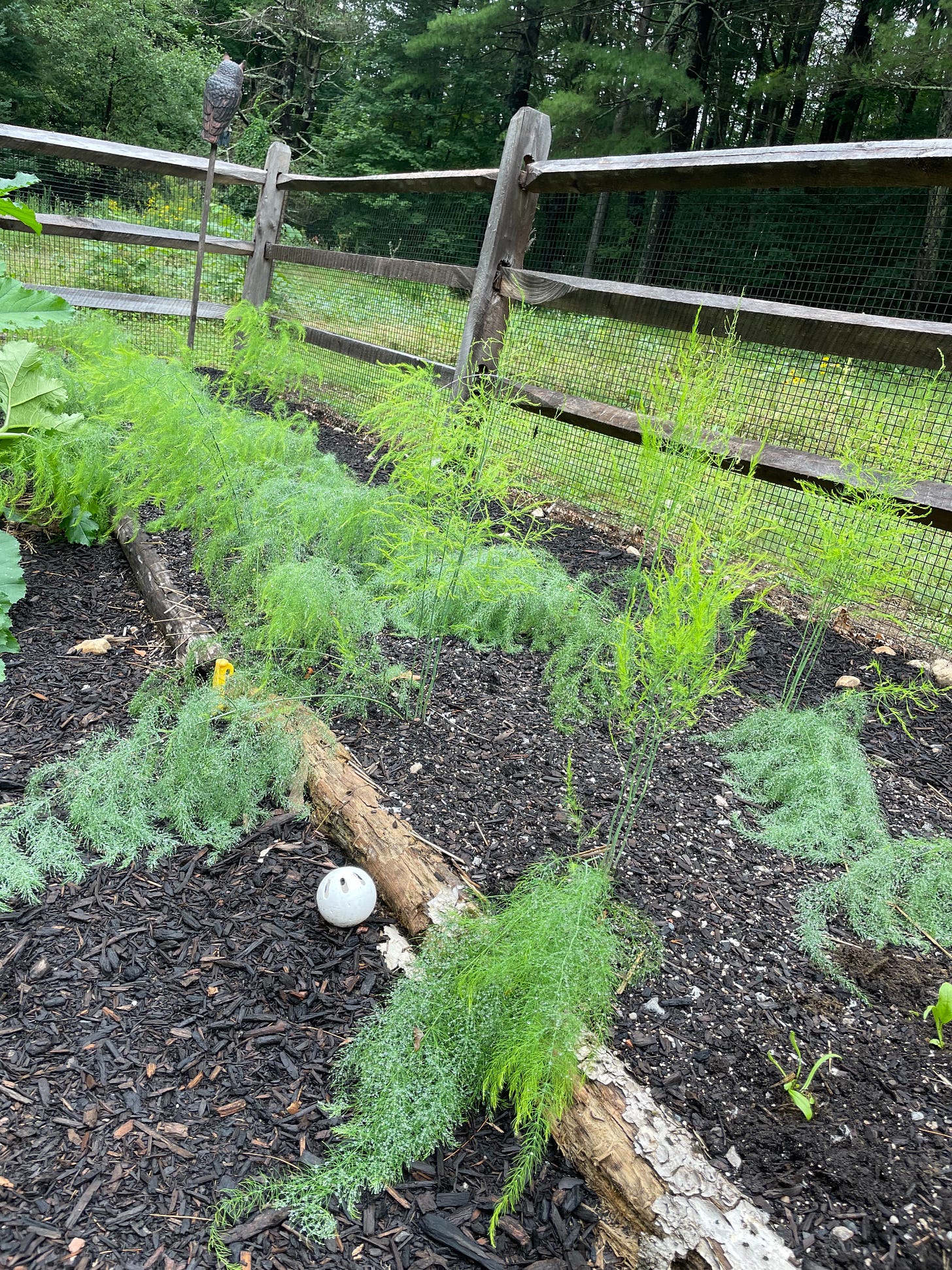Want to grow asparagus? Be patient
A new asparagus bed reminds us of the passage of time and virtue of contentment
I never lost faith that our year-old asparagus bed would come back to life though I admit some doubt was creeping in. April is the start of asparagus month in the Northeast. Where was ours?
The other day I knelt by the bed and gently swept back the shredded leaves I had protectively mounded around the remnants of last summer’s ferns to take yet another peek. And there it was, peeking right back at me. The first asparagus spear of the season had stuck its head out of the ground. Others have followed over the past several days, their heights rising and falling along the rows like the notes of a simple musical score.
Now comes the hard part. We’re not allowed – or so advise the gardening gods – to harvest any asparagus this year. That’s supposed to wait until next spring, when our plants will be three years old. We’ll follow that plan, though we might sneak a spear or two. Holding back, though, will allow more spears to grow into ferns this summer to capture more of the sun’s energy for the developing root system beneath the soil. We’ll be paid back for a couple decades or so with asparagus from our bed every year.
Establishing an asparagus bed is an investment, especially in time. I won’t dive too deeply into gardening’s many life lessons but I’ve often reflected on how putting a plant into the soil and watching it grow can provide a healthy perspective on life’s progression and a deeper appreciation of the passage of time. The simple act of planting has to me always been an expression of confidence in the future, an unspoken understanding that what we are doing today can have a positive result tomorrow, even when tomorrow is sometimes a long, long time away.
Nothing embodies this more than the planting of a tree, many of which outlive us all. Years ago we bought an “October Glory” maple and placed it in the center of our backyard outside Washington, D.C. Our two children were just starting elementary school and the tree was maybe 10-feet tall. When we moved 25 years later, they were out of college and that glorious maple had soared three or more stories, having transformed much of the yard into a shady oasis during the hot summer months. In the maple tree’s lifespan it was only entering young adulthood. We, on the other hand, had grown from young parents driving to Little League and soccer practices to empty nesters with kids who could give us more wise advice than we gave them. Shortly before we moved, I planted a tiny hawthorn near the front walk. In its maturity that tree, with its tiny white flowers in spring and red berries in fall, will grow to 25-30 feet with a gorgeous mounded crown. We won’t be there to see, but I’m confident someone will and I hope they appreciate it.
Which brings me back to our asparagus. I sometimes grow impatient with small things in life. Gardening reminds me of the virtue of contentment. I’m happy to wait for the day – next year! next year! – when we can actually enjoy it at our table.
Here’s how we got started with our asparagus bed.
The biggest decision was where to put it. Asparagus, as I’ve noted, takes time to establish itself and once planted you really can’t – or shouldn’t – move it. It performs best in full sun and occupies a fair amount of space. We’ve devoted about 60 square feet to our bed, which measures 18 by 3 ½ feet. In the scheme of things it’s not that large but in terms of our 840 square foot garden it’s a significant commitment, especially for a crop that only comes for just a few short weeks once a year. The asparagus ferns also can grow fairly tall over the summer, so we placed our bed along the garden’s eastern edge to minimize the amount of shade they’ll cast on nearby beds. The ferns also can spread out a bit, so I’m thinking we may have to run some stakes and twine along the southern edge of the bed to keep the ferns from sprawling over the adjacent patch of strawberries.
We started preparing the bed in the fall of 2022, adding compost, shredded oak leaves and white pine needles to enrich the soil and hopefully lower its pH a bit. Asparagus grows best in soil in the the 6.5 to 7 pH range; ours hovers on the higher end. Having prepared the bed months earlier, we were ready to plant last spring, which we did on Memorial Day weekend.
We ordered 20 bare-root plants from Gurney’s Seed & Nursery, which ships mail order from Greendale, Indiana. It’s recommended you plant 25 crowns for a family of four (we’re just two, except when we have visitors) but with a recommended spacing of 12-18 inches between plants, 20 was about what we could fit. We selected Jersey Knight, a variety recommended for its productivity and resistance to disease. The plants are also hybridized as predominantly males, which is a good thing if you want more spears and fewer seeds. The crowns arrived in mid-May, looking a bit like bags of shriveled white octopus. We dug two 10-inch deep parallel trenches along the length of the bed and arranged mounds of soil about 18 inches apart along each trench. We next draped the roots of our plants over each mound, allowing the roots to spread out and leaving the crowns at the top. We added a few handfuls of Hollytone, a sulfur-rich organic fertilizer to give the plants a boost and help lower the soil pH, and then we covered everything to just over the top of the crowns, which left two four-inch deep trenches. As the plants grew in the weeks ahead, we added more soil and compost to fill the trenches and keep the crowns covered until we were at ground level. Then we just let them grow. I cut back the ferns last fall, added an inch or so more compost to the bed and then covered everything in shredded leaves for the winter.
That’s where they slept until this past week when the tiny nubs started raising their heads to the sun.








